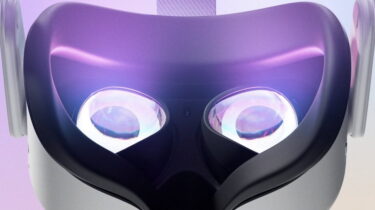Meta Quest 2: 120-hertz mode becomes a standard feature

Almost a year-and-a-half after its introduction, 120Hz support finally becomes a standard feature of Meta Quest 2.
Meta introduced the mode in April 2021 as an experimental feature. The faster frame rate only applies to VR apps optimized for it. In the home environment and the system menus, the Meta Quest 2 still runs at 90 hertz by default.
Users of the first Meta Quest were left out, and still have to live with 72 frames per second in VR apps and outside.
In May 2021, 120Hz support followed for Quest Link, i.e. the PC VR operation (info) of the device, which additionally has to be activated in the Oculus PC app under the device settings.
Advantages and disadvantages of the 120-hertz mode
What do more frames per second bring? Quite simply, the higher the number of rendered frames, the more realistic, fluid, and enjoyable the gaming experience.
Titles that require fast reactions particularly benefit from a high number of frames per second. Examples include Eleven Table Tennis, Superhot VR, and Gorilla Tag. One drawback of the 120 hertz mode is that it consumes the battery faster and the headset can get warmer than usual.
While the 120-hertz mode was previously found under the "Experimental Features" and thus well hidden in the settings, it will soon become a standard feature of Meta Quest 2. This is promised by John Carmack via Twitter.
Meta Quest 2: What changes and what doesn't change
What does this change for users? First of all, they no longer have to search for and activate the feature in the settings. It will be enabled by default.
Secondly, immersive videos in the Meta Quest browser could soon be played automatically in 120-hertz mode. Carmack is lobbying Meta for this improvement. The programmer generally advises developers to use the 120-hertz mode for VR apps that play videos at 60 frames per second. This is to avoid image flickering.
Carmack also wants to publish a demo app that shows how immersive video material looks with "real" 120 frames per second.
120 fps has been an "experimental feature" on Quest 2 for a long time, and we are finally going to make it default-on. Any app that plays 60 fps video should consider 120 fps display -- it avoids the flicker of 60 fps display, and makes imperfect release tempo less harsh.
- John Carmack (@ID_AA_Carmack) September 5, 2022
What won't change is the refresh rate of the home environment and system menus. And virtual reality apps will continue to play at the frame rate set by developers.
It is not clear when the 120-hertz mode will become a standard feature and the browser improvement will come. It might already happen with the September update, whose content is not yet known.
Note: Links to online stores in articles can be so-called affiliate links. If you buy through this link, MIXED receives a commission from the provider. For you the price does not change.